Have You Ever Noticed The Stickers With Numbers On Them At Grocery Store? THIS Is What It Means!
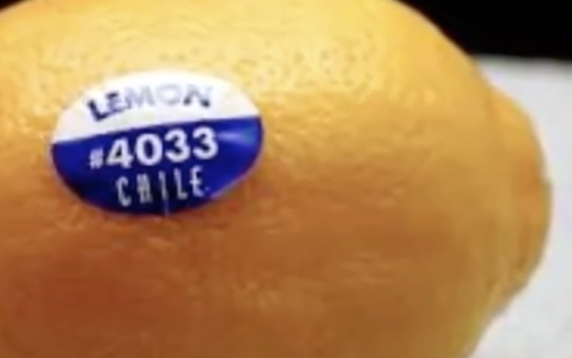
image via – youtube.com
Most people don’t think much about the little stickers that sometimes come on the fruits and vegetables they buy at the grocery store. The pesky round stickers always have a couple of numbers on them and despite what many people think, they aren’t there to simply annoy us.
The numbers are an items Price Look-Up (PLU) code, which are used and placed on unprocessed, fresh produce. Grocery stores and supermarkets use these codes to keep track of inventory and to speed up, streamline, and improve check-out times. The stickers and numbers readily identify the type of produce, commodity, variety, and how it was grown, thus eliminating the human error involved in cashiers guessing what specific type of produce an item may be.
Not all fruits and vegetables are labeled with a PLU sticker since, at least in the US, the codes are optional and not required by law. However, the produce that do feature them can tell you a lot about how that item was grown and whether or not it was genetically modified, produced with fertilizers and herbicides, or organically grown. Here are the main things you should know:
– If a PLU code has only four numbers total or begins with a 0, it indicates the produce was conventionally, or traditionally, grown with the use of common pesticides. Since it’s established fact that there are known health risks associated with ingesting pesticides, and that they can accumulate in our bodies, the codes can help you avoid these types of produce. An example of this is that a Macoun apple that has been traditionally grown will bear a PLU code of 3073.
-If a PLU code has five total numbers and it begins with an 8, it indicates the produce was genetically modified (GMO). Basically anything that is grown from a genetically engineered seed falls under this category and is not organic or traditionally grown. According to the video and the Monsanto website, there are 8 commercially available GMO types of crops that include corn, cotton, soybeans, alfalfa, canola, sugar beets, squash, and papaya.
However, since PLU codes are optional, many growers and suppliers purposefully don’t label their food because they know consumers will avoid anything labeled as GMO. For illustrative purposes, if you were to ever see a label with an 8 it’d look like this; 84011 for a genetically modified banana.
– If a PLU code has five total numbers and it begins with a 9, it indicates the produce was grown organically and is not genetically modified or engineered. Organic fruits and vegetables are grown without the use of any unnatural products like pesticides, herbicides, fungicides, insecticides, or synthetic fertilizers.
Thus, they’re healthier and much better overall for our bodies, the earth and environment. Women who are pregnant and young, developing children may especially benefit from organic produce.
Furthermore, if you want to buy and eat only organic produce, look for items that are labeled as 100% organic and USDA certified. Food labeled as such cannot be produced from any type or form of genetically modified organism and the US government regulates the term strictly according to law.
In comparison, some foods are labeled “GMO-free” and “non-GMO” but those terms are not set or regulated by any government body. Instead, groups of food companies form associations and they set the standards and regulate what qualifies as fitting under the label.
Since their business and bottom line is profit-motivated, and non-GMO labeled food often sells for a higher amount, there has been problems with misleading labels in the past. In short, they simply cannot be relied upon, on their own, as being absolutely 100% non-GMO. When in doubt, look for a 5 digit PLU that starts with a number 9 and packaging that clearly states the product is labeled as USDA certified, 100% organic.
Did you know about this?
Please Share This Information With Family and Friends 🙂
Have You Ever Noticed A Fence Painted Purple? It Means THIS..
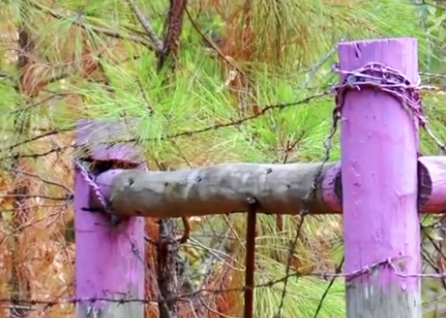
image via – youtube.com
Seeing purple paint on fences in rural Texas is extremely common, but many people don’t know what it means. The practice began in 1989, as a subtle way of letting strangers know that they were entering a private area. Most people have no clue what this purple fence means but awareness could easily stop an unnecessary tragedy from happening.
You might think that “No Trespassing” signs would be a more direct way of reminding people of land boundaries, however those signs would often disappear or be damaged. Texas passed a law in 1997, that would particularly alert hunters and fisherman not to go further, saying that purple paint meant “No Trespassing”.
In the video you are about to watch below, you will hear more about how this came about, and why the color purple was used. The Purple Paint Law has also gone into effect in Illinois, and violation because you are ignorant of what it means is no excuse.
Did you know about this?
Please SHARE This With Your Family and Friends
Have You Seen These Parking Spots That Have Been Painted Purple? THIS Is What It Means!

For the men and women who have been wounded in combat, the sudden shift from military life to civilian life can be especially difficult. After sacrificing so much while serving their country, injured veterans often face long uphill battles on their road to recovery. While many show outward signs of their injuries and bear bodily scars, many more are wounded internally, in their hearts and minds. These men and women often witnessed horrific tragedies and yet they fail to receive the treatment and help they truly deserve and need. Some go on to develop PTSD or depression and all too often they end up suffering in silence.
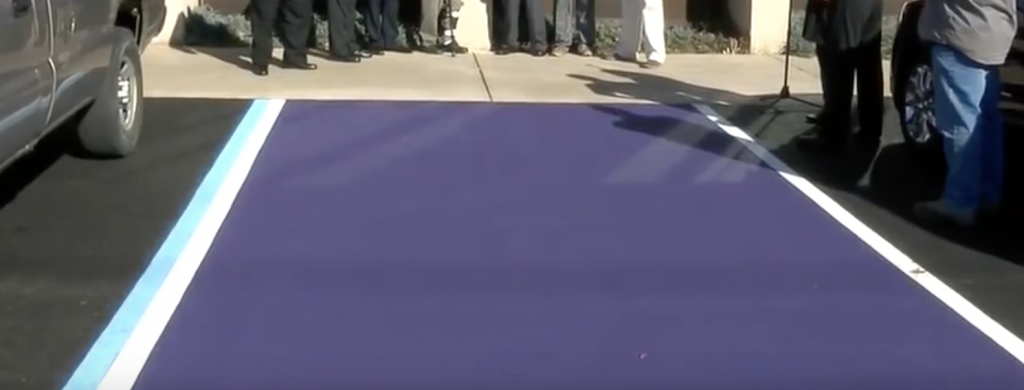
Many veterans return home and successfully resume a normal civilian life but countless others struggle with the transition. There are many organizations, charities, support groups, and local community members who want to raise awareness and help those veterans readjust to life outside the military. They offer medical and financial assistance, job training, special housing for those who return disabled, counseling, and much more!
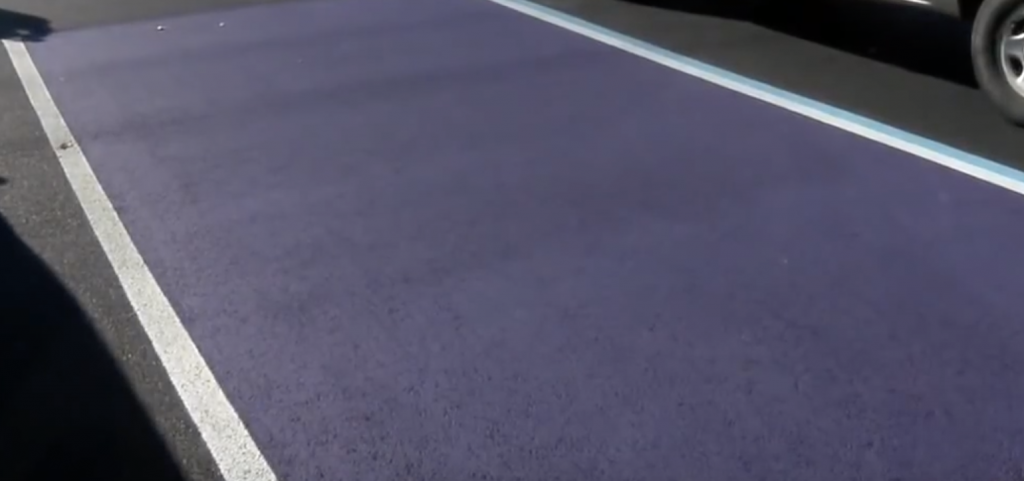
Recently the Wounded Warriors Family Support Organization wrote that in America today “There are an estimated 1.8 million Purple Heart recipients, combat wounded service members who have transitioned back into civilian life.” The organization noted that many of these veterans often go unrecognized by society and without help, and as such our country can do a whole heck of a lot more for them.
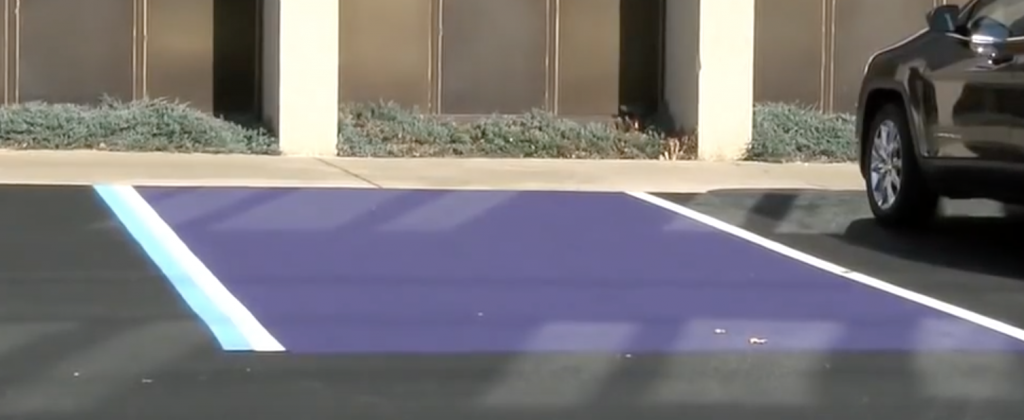
Which is why the organization has decided to offer ‘Combat Wounded Parking Signs’ to local businesses across the country who wish to offer reserved parking spaces for those injured in combat. The signs feature a prominent Purple Heart image along with the words ‘combat wounded’ and ‘reserved’ written in purple to clearly signify what it all means. In addition, all of the reserved spots will be painted purple which helps to attract more attention and the signs can be obtained free of charge from the organization.
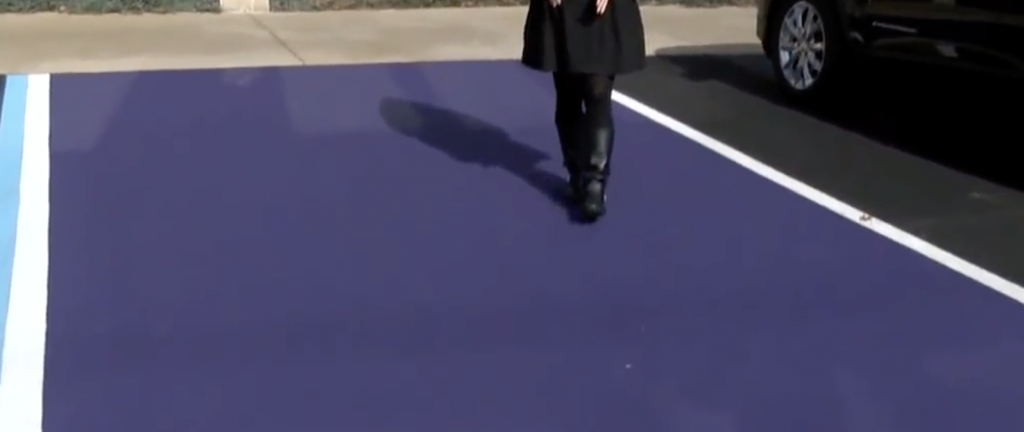
So far the parking spots and signs have attracted positive interest and both veterans and civilians alike have welcomed and hailed them as a great idea. One social media user commented online “Priorities well placed! Even if the spot is empty, a good reminder for those who walk by.” Now that the word is out and more and more spots are popping up across the country, the concept is steadily gaining and bringing much needed attention to the plight of our nation’s veterans.

The next time you see a purple parking spot, don’t park in it unless you have a Purple Heart! It’s just one small act of respect and acknowledgment that our veteran’s so clearly deserve.
Please Share This With Family and Friends
If You Ever Spot Coins On Somebody’s Gravestone It Means THIS
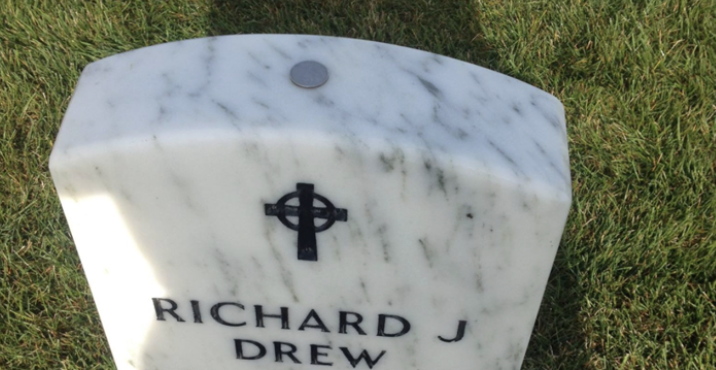
Image via: facebook.com/DaveMalenfant
The national and state veterans cemeteries that dot America are special, sacred places. Burial there is reserved for the brave men and women who made the ultimate sacrifice and gave their lives while serving in the military. If you’ve ever visited one of these veterans cemeteries before then you may have noticed coins left atop the stone markers, and if you are not in the military then you likely wondered what it all means.
Coins that have been left on or around gravestones indicate that someone stopped by to visit and pay their respects to the deceased buried there. Pennies, nickels, dimes, and quarters are each representative of different meanings. Depending on the denomination, the presence of each type of coin sends its own distinct message, but they all tell the soldier’s family and loved ones that someone stopped by.
Leaving a penny atop a grave means that someone visited to pay their respect, while nickels are left to signify the visitor trained at boot camp with the deceased. Leaving a dime at a grave means the visitor served with them at some point or in some capacity. A quarter left on a stone marker is symbolic of the fact that whoever left it was with the soldier when they were killed.
While the practice of leaving coins on military graves dates back to the Roman Empire, it’s a relatively recent occurrence here in America. It began in the mid 1960s when people started leaving coins at cemeteries during the Vietnam war as a way to show that they had visited a soldier’s grave.
At that time the country was torn and divided by the hugely unpopular war. Rather than contacting a soldier’s family directly, and risking either upsetting or getting into an argument with them, visitors chose to simply leave coins to communicate the fact they’d been there.
The tradition has been carried on over the years and it’s proven to be beneficial for everyone. At national and state veteran cemeteries the coins are collected annually and the money is used to pay for the upkeep and maintenance of the grounds.
Some of it goes toward paying and covering the burial costs of indigent veterans. Visitors are able to pay their respect and let the deceased’s family know that they stopped by. Memories are shared, healing occurs, and people feel better about the past. All of this is possible with the simple act of marking your remembrance with a coin, and that’s beautiful.
Please SHARE This With Family and Friends
If You Notice A Purple Butterfly Above A Newborn At The Hospital, THIS Is What It Means..
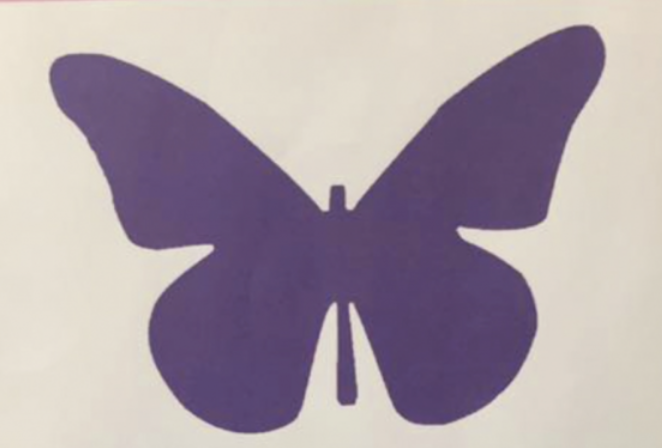
When Millie found out she was having twins, she and her husband Lewis were so excited. Millie’s family had a history of twins, so her delight in continuing the tradition felt just right. Unfortunately, this exciting news was followed by a finding by the doctors, that was like a punch in the stomach.
They were informed that one of the unborn twins had a rare condition that causes severe developmental effects on the brain. Known as Anencephaly, this condition in newborns has a survival rate of only a few days. Taking in the shock of this awful news, and having to go throughthe pregnancy knowing only one of your children will survive, was unimaginably hurtful.
The mixed feelings of grieving impending loss while looking forward to the birth of a healthy child, must be terribly confusing and stressful. At the time of the birth, Millie ended up having an emergency C-section, and the affected twin whom they named Skye, died soon after. The video you are about to watch below tells the story of what occurred next.
As they were dealing with the loss and attending to their healthy newborn, a stranger who knew nothing of their circumstances, made a throw-away comment which had a far-reaching impact…”You’re so lucky you haven’t got twins…”
The person was just trying to be supportive and was completely unknowing of their situation. Millie became hysterical as the comment stung badly, in her vulnerable state. Although she realized the comment was unintentionally hurtful, the experience gave birth to her idea for protecting other parents from such unknowing comments. Although the comment was meant to be humorous, she said that those words nearly broke her; it was then that the idea of the purple butterfly as a sign of loss came to her.
In order to raise awareness about loss in a multiple pregnancy Millie and Lewis, and the need for sensitivity, they started the “Skye High Foundation”. Named after the child they lost, their goal was to have purple butterfly stickers (below) in neonatal wards in hospitals across the nation!
Their intention is to try to save parents who are grieving such a terrible loss, added trauma by unknowing people. They have started a fund for parents in similar circumstances, and being courageous and caring in attempting to turn their personal tragedy, into support for others.
Please SHARE this INSPIRATIONAL STORY with your family and friends
If You Notice Someone With A Red String Tattoo, THIS Is What It Means!
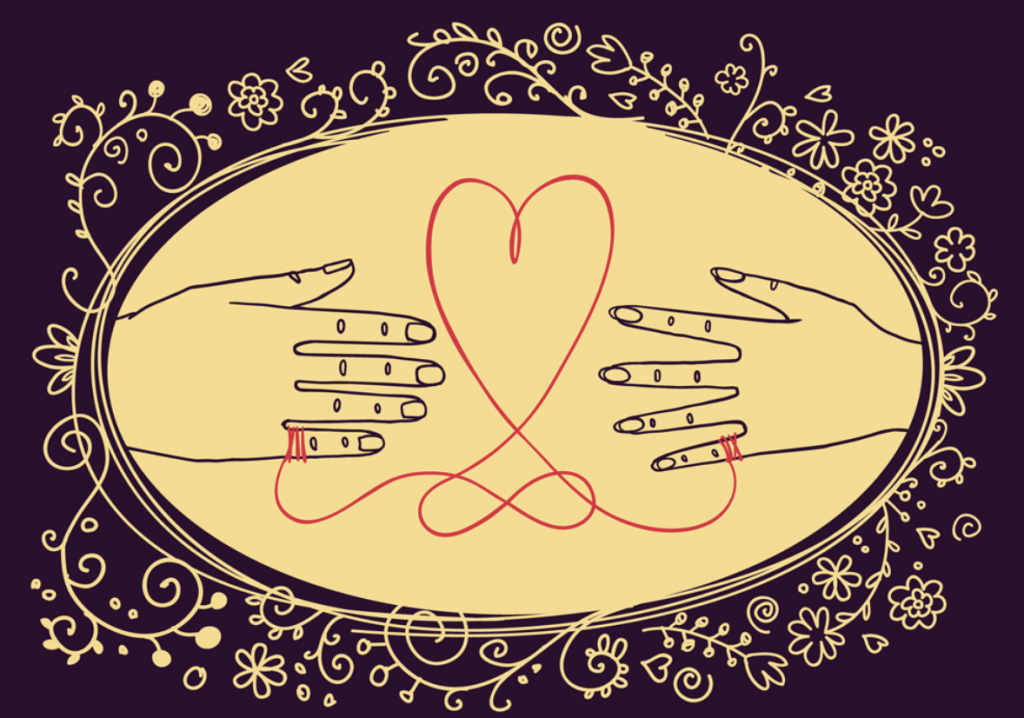
Tattoos are becoming increasingly common and can be found across the world on just about every part of people’s bodies. It was just a few decades ago that body art used to be frowned down upon, and it was even considered to be somewhat of a taboo. However, these days it’s accepted by the mainstream and embraced by all sorts of people throughout society. Many people choose to get them for personal reasons and they often hold some type of meaningful significance. Dates, names, portraits, and other special things are permanently inked onto skin in symbolic remembrance and celebration of memories. Tattoos are here to stay and regardless of if you have none, one, two, ten, or 100, you may find this new trend to be quite interesting.
Throughout the history of tattoos, Eastern inspired designs have always been among the most popular. All of the many dragons, lotuses, and Chinese symbols that adorn people’s bodies can attest to that. The newest design that is currently taking hold around the world can also trace its roots back to East Asia. The trend sees people tattooing tiny red strings around their pinky fingers. The small, delicate looking red line wraps completely around the pinky and is tied off with a neat bow. In terms of symbolism, these red string tattoos are all about love, fate, destiny, and soulmates.
The story behind it all is known as “The Red String of Fate” legend, which is found in both Japanese and Chinese cultures. According to Wikipedia “The two people connected by the red thread are destined lovers, regardless of place, time, or circumstances. This magical cord may stretch or tangle, but never break.” The folklore further says that when a tiny red string is wrapped around a man’s thumb it connects him to the pinky finger of the woman whom he is meant to spend the rest of his life with. The legend has inspired people, especially couples, to ink the small red strings on their fingers. Even those with no romantic inclinations are getting the tattoos as a symbol of their friendship and love for friends and family. They usually place the design in a different area other than the hand, such as on ankles and wrists, and go with someone to get matching tattoos. Now when you spot a red string tattoo, you’ll know the meaning behind it.
Please Share This Story With Family and Friends




